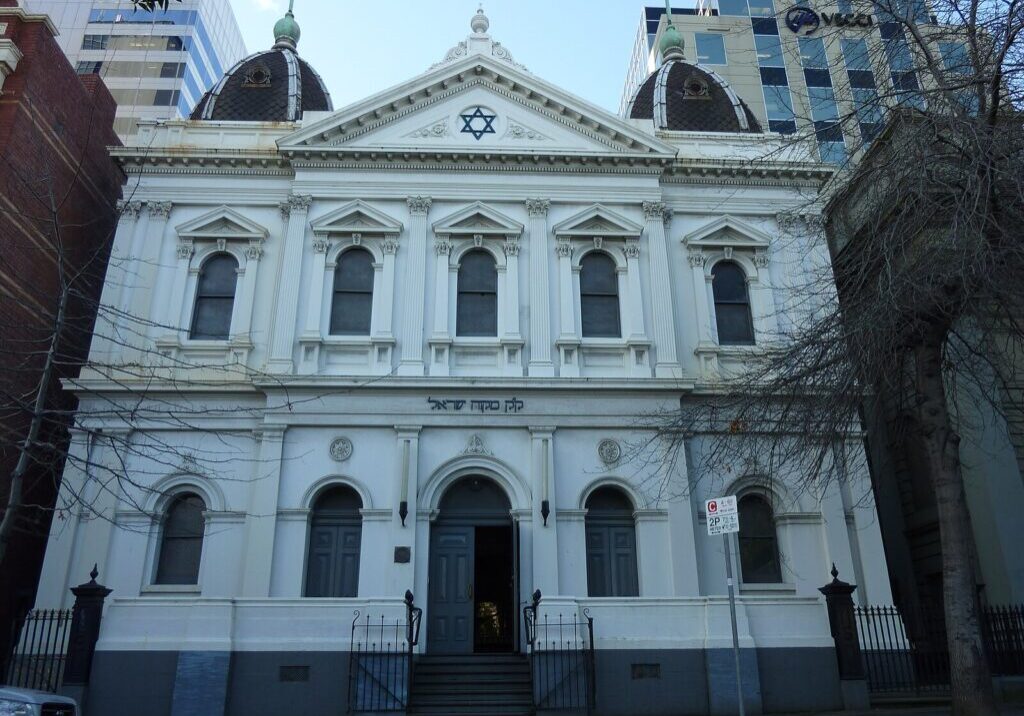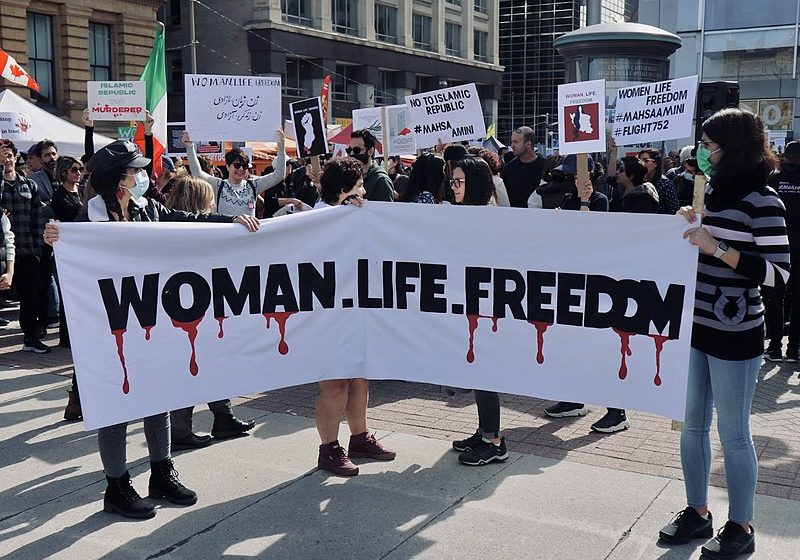Australia/Israel Review
Behind the News – December 2024
Nov 20, 2024 | AIJAC staff

ROCKET AND TERROR REPORT
Between Oct. 8 and Nov. 13, at least 14 rockets and one drone were launched from Gaza into Israel. The IDF suffered about two dozen fatalities in Gaza since early October, bringing the total killed since ground operations in Gaza began to at least 378.
On Oct. 17, the IDF killed Hamas leader Yahya Sinwar in Rafah. He was carrying a passport and thousands of shekels, suggesting he was trying to escape Gaza.
A planned car bombing of the Azrieli mall in Tel Aviv by Islamic State loyalists was reportedly thwarted in early October. On Oct. 15, a terrorist shot and killed a police officer and wounded four others on Route 4 near Yavne. On Oct. 18, two Jordanians attempted to conduct an attack in Israel but were killed. On Oct. 27, one civilian was killed and dozens injured in a truck ramming north of Tel Aviv, while a vehicular and stabbing attack was thwarted south of Jerusalem. Two civilians were injured on Nov. 6 in a car-ramming and stabbing attack. IED and other planned attacks have been thwarted throughout the West Bank and Israel.
Israeli counterterrorism operations throughout the West Bank continue to result in substantial numbers of suspects detained and terrorists killed.
IDF OPERATIONS IN JABALYA KILL 1,000 TERRORISTS
IDF Chief of Staff Lt. Gen. Herzi Halevi visited IDF troops in northern Gaza’s Jabalya on Nov. 8 amidst an ongoing operation which began in early October, when the IDF encircled the refugee camp. According to intelligence sources, Hamas was controlling its operations for the entire northern Gaza from the area.
The IDF says approximately 1,000 Palestinian terrorists have been killed and 1,000 captured in the month-long operations. This is the third time the IDF has returned to Jabalya since the war began in October 2023. The IDF operations have included the evacuation of 55,000 of the approximately 70,000 Palestinians originally in the area. There is testimony that, initially, Hamas terrorists were shooting fleeing civilians to deter evacuations.
The IDF estimates that approximately 500-600 terrorists remain within the area, often blending into the civilian population that has yet to leave.
LEBANON: ROCKETS, DRONES AND CASUALTIES
According to some sources, Hezbollah fired more than 6,340 rockets, missiles and drones at Israel in October, up to four times as many as previous months. However, the number of attacks declined in November.
These attacks killed around 12 civilians and two soldiers, and injured many others. A drone caused minor damage to the private residence of PM Binyamin Netanyahu in Caesarea on Oct. 19. He was not there at the time.
Drones also continue to be launched almost daily by Hezbollah’s allies from Iraq, with more than 100 fired in October and dozens more in November.
Hezbollah is estimated to have lost 2,000 soldiers since the start of ground operations on Oct. 1. During that period, at least 44 IDF soldiers have been killed inside Lebanon.
DETAILS OF ISRAEL’S STRIKE ON IRAN
New details about Israel’s Oct. 26 attack on Iran indicate that it was a major success.
According to the latest revelations, satellite imagery and expert analysis, Israel struck a solid-fuel factory required for Iran’s Kheibar and Qasem missiles, damaging around 20 heavy fuel mixers, possibly stopping production there for around two years, and other missile production sites. Israel also struck and neutralised a site used for nuclear weapon-related research at Parchin.
Israel also reportedly destroyed all of Iran’s three remaining Russian made S-300 anti-aircraft batteries protecting strategic sites. The other battery was hit in Israel’s attack on Iran in April.
Senior US envoy to the Middle East Amos Hochstein noted after the October strike that “Iran is essentially naked” with no effective air defence.
Israeli intelligence initially assessed that Iran was intending to retaliate by attacking using proxies in Iraq. However, the US warned Iran it could not restrain Israel’s retaliation if Iran attacked it again, and some reports say that, following Trump’s election victory in the US, Iran has postponed any retaliation plans until at least January.
IRANIAN ATTEMPT TO ASSASSINATE TRUMP
On Nov. 8, the US Department of Justice announced that three arrested suspects would be charged over an attempt to assassinate Donald Trump during his 2024 campaign for presidency. They were allegedly hired by Teheran to murder Trump in revenge for the killing in January 2020 of Islamic Revolutionary Guard Corps commander Qassem Soleimani during Trump’s first term.
Meanwhile, Iran’s currency, the rial, is in free fall. In mid-November, the unofficial black market exchange rate was around 700,000 rials per USD. When Iran’s new President Masoud Pezeshkian took office on July 30, it was 580,000 per USD.
US STRIKES IN YEMEN
The US launched B-2 stealth bombers to strike at underground bunkers in Yemen in mid-October as part of its mounting response against the Houthis’ ongoing strikes against navy and commercial ships in the Red Sea. The US strike was also likely a warning to Iran (the Houthis are an Iranian proxy group), with US Defence Secretary Lloyd Austin saying: “This was a unique demonstration of the United States’ ability to target facilities that our adversaries seek to keep out of reach, no matter how deeply buried underground, hardened or fortified.” The US conducted further attacks on Houthi weapons storage facilities in Yemen on Nov. 9 and 10. On Nov. 11, two US navy destroyers came under heavy fire from the Houthis, but warded off the drones and missiles.
Meanwhile, the Houthis continue to target Israel from Yemen, with two missile attacks successfully intercepted in early November.
UNRWA BANNED IN ISRAEL
Israel’s Knesset approved two new laws on Oct. 28 banning UNRWA – the United Nations refugee body dedicated solely to Palestinians – from operating in the country, and prohibiting Israeli officials from cooperating with the group. There will be a 90-day transition period for other humanitarian aid groups to take over from the controversial organisation.

Netanyahu with new FM Gideon Saar (Image: GPO/ Flickr)
NETANYAHU SACKS DEFENCE MINISTER GALLANT
Israeli Prime Minister Binyamin Netanyahu fired popular Defence Minister Yoav Gallant on Nov. 5, a move that inspired multiple protests across the country. Netanyahu and Gallant had been frequently at-odds – including over elements of the wars against Hamas and Hezbollah – and Netanyahu had previously tried to dismiss him in March 2023. Netanyahu cited “significant gaps” and a “crisis of trust” for his decision.
Netanyahu replaced Gallant with Foreign Minister Israel Katz. Former Likud member and minister Gideon Saar was appointed as the Foreign Minister to replace Katz, after bringing his New Hope party into the coalition in September.
Major issues of contention between Netanyahu and Gallant include the timing of an inquiry into the events of October 7 – with Gallant wanting an inquiry immediately and Netanyahu saying it should only be held after the current war is over – and the drafting of ultra-Orthodox men into the IDF, which ultra-Orthodox parties in Netanyahu’s governing coalition strongly oppose.
Stranger than Fiction

Screenshot from Amazon website
WHAT A BUMMER
Usually, this column features attacks on Israel or Jewish people that are so absurd that they make the perpetrators look ridiculous. This month, however, we have an instance where someone tried to do something nice for the Jewish community, albeit to make money, but it went terribly – and hilariously – wrong.
In the lead up to the week-long Jewish festival of Sukkot, which this year started on Oct. 16, Amazon was advertising brightly decorated boxes that could be purchased to help celebrate the holiday, presumably to put treats in as presents – although that’s not really a traditional feature of Sukkot.
The boxes had “Happy Sukkot” written on them in English, with the Hebrew letters for Sukkot underneath. That’s where the manufacturer got into trouble. Many people would know that, unlike most Western languages, Hebrew is read from right to left. The designer evidently did not – so the letters were correct, but were in reverse order.
This would have been bad enough if the result was nonsense, but in this case, the word spelt was “tuchus” – a slang Yiddish term for buttocks. Wishing someone a “Happy Backside” is certainly not a traditional part of any Jewish festival – although many Jews found the error hilarious and ordered the boxes specifically because of the misspelling.
It’s nice that the people behind the boxes thought about the Jewish community. It’s just a shame they made such asses of themselves.






